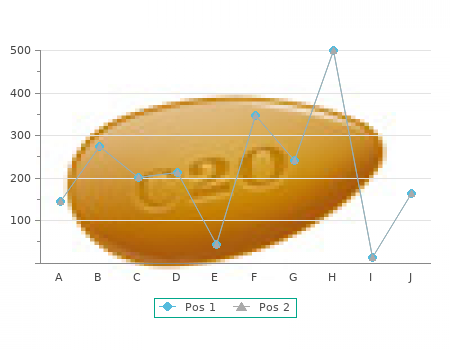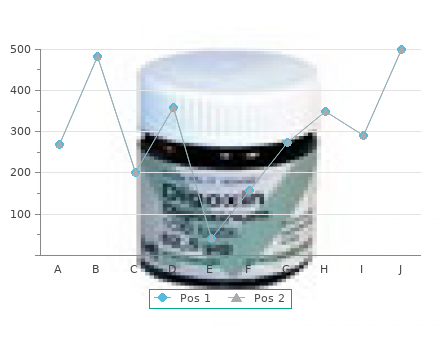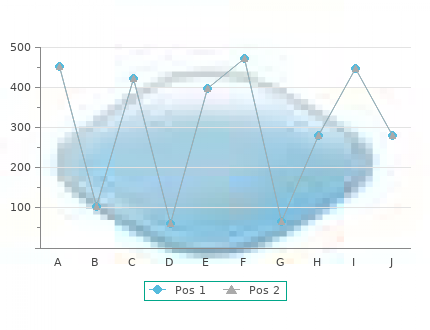Zoloft
By K. Myxir. Grand View College.
Wards buy zoloft 25mg with amex depression zinc, operating theatres discount 25mg zoloft overnight delivery anxiety zoloft forum, general Dr Sylvius also understood another important feature of practice, and community clinics provide a one to one teaching—close behavioural observation (of each context for active learning other, teacher and learner). In the closely observed one to one relationship your unguarded statements, your reactions under pressure, and your opinions about other people and the world at large are all magnified. As a teacher, you are an important role Just as you cannot hide from the learner, so the learner’s model whether you wish it or not knowledge, skills, and attitudes will become apparent to you. Provided that you have created a trusting relationship, you can discuss his or her personal and professional attitudes and values in a way that is seldom possible in a larger group. Another feature of one to one teaching is the opportunity to adjust what you teach to the learner’s needs—“customise” your Lecture Seminar PBL Clinical One to one group tutorial clinical teaching. In 1978 Ausubel and colleagues suggested that the attachment secret of education is to find out what the learner already knows Efficiency* High Medium Low Low Very low and teach accordingly. In a lecture, tutorial, or seminar you Active Low Variable High Medium Very high cannot hope to diagnose and respond to every individual’s learning (usually) to high learning needs, but a one to one relationship provides an Mutual Low Medium High Medium Very high opportunity to match the learning experience to the learner. Stott and Davis in 1979 promoted the idea that one to one PBL=problem based learning. The principles used in primary care consultations can be applied to one to one teaching, and the secret is forethought and planning. Plan ahead—ask yourself some important questions x What is the main purpose of the one to one attachment? Exceptional potential of one to one teaching x How would you like this learner to describe the experience to a peer? Find out and remember the learner’s name—a simple but important courtesy. Outline the special opportunities and benefits that the attachment can provide. Ask the learner to prepare a learning plan and then compare the learner’s plan to your own expectations. Once the plan has been agreed, don’t shelve it—refer to it during the attachment and modify as necessary. Agree on the ground rules Ground rules are both practical (punctuality, dress, access to patient records) and philosophical (respect for patients and colleagues, confidentiality, consent, openness to different points of view). Make sure that the learner knows how much Find out and remember the learner’s name—a simple but important courtesy time you will be able to spend in observing, teaching, and giving feedback and what you expect in return. Ask helpful questions Open ended questions are generally better than closed questions at the beginning of the exchange. A small number of Skilful teaching is not unlike skilful closed questions later in the conversation help you to history taking “diagnose” just how much the learner knows and understands. Try to formulate questions that assume an appropriate amount of knowledge, but build in higher order thinking and/or higher order skills. You might ask the learner, for example, to explain to you (as if you were the patient) the mechanisms behind a condition such as asthma or hypertension. This simulates “If musicians learned to play their instruments as clinical interface with a patient—testing recall, understanding, physicians learn to interview patients, the procedure and communications skills all at once. The instructor of course, would not be present to observe or listen to the Learners value feedback highly, and valid feedback is based on student’s efforts, but would be satisfied with the observation. Deal with observable behaviours and be practical, student’s subsequent verbal report of what came out of timely, and concrete. Begin by asking the George Engel, after visiting 70 medical schools in learner to tell you what he or she feels confident of having done North America wellandwhatheorshewouldliketoimprove. Followupwith your own observations of what was done well (be specific), and then outline one or two points that could help the student to improve. Encourage reflection Monitor progress Just as many learning opportunities are wasted if they are not x Identify deficiencies accompanied by feedback from an observer, so too are they x Ask the learner, half way through the attachment, to do a self wasted if the learner cannot reflect honestly on his or her assessment of how things are going. One to one teaching is ideally suited to identify deficiencies within a safe learning environment, you can encouraging reflective practice, because you can model the way work together to tackle them well before the attachment ends a reflective practitioner behaves. Two key skills are (a) x If you have serious concerns, you have an obligation to make them known to the learner and to the medical school or training “unpacking” your clinical reasoning and decision making authority processes and (b) describing and discussing the ethical values x It is not appropriate to diagnose serious problems and hand the and beliefs that guide you in patient care. When 23 ABC of Learning and Teaching in Medicine junior colleagues interact with a learner, you can encourage them with positive feedback on their teaching.

In the case of advanced- and terminal-stage OA cheap 50 mg zoloft free shipping homosynaptic depression definition, when there is no longer cartilage in the weight-bearing surface buy zoloft 25 mg mastercard anxiety 10 year old daughter, then the congru- ency should be destroyed first to improve the mechanical condition and to assist the formation of repair tissue and promote the repair of the articular surface. The question is whether the cartilage would simply disappear, or whether chondroid plug-producing bone marrow would appear in the articular surface. If we wanted to treat all cases the same way, with enlarged weight-bearing area and improved congruency, as was the case in pre- and initial-stage OA, there is a limit to what we could accomplish. OA Joint Reconstruction Without Replacement Surgery 177 Significance of VFO for Advanced- and Terminal-Stage OA in Middle-Aged Patients Dr. Takatori presented the effectiveness of rotational acetabular osteotomy (RAO). For example, what happens if RAO is performed at the age of 35, as opposed to doing nothing at that age and THR at the age of 45? If a patient did nothing until 45, she would have progression of OA and require THR at 45. Assuming that she enjoys an average life span, she would require a second revision. However, if the patient had an RAO at the age of 35, her first THR would be around the age of 60, and the second THR around 75, and she would only require a single revision surgery in her lifetime. Now the next question is what happens if the patient was not treated by RAO and had VFO at the age of 45, instead of THR. The average course of VFO shows that the patient would require her first THR around the age of 60, and her second THR, or revision, at the age of around 75. Even if the patient is not indicated for RAO because of the advanced or terminal stage of OA, it is questionable whether she should have THR for her first surgery. The question here, however, is the difference of the clinical result that can be expected from THR versus VFO at the age of 45. Thus, it is all up to the surgeon to decide whether one would be willing to accept this, or whether one would prefer multiple revisions. While plans were being made, an nonsteroidal antiinflammatory drug (NSAID) was given on a pro re nata (PRN) basis, and I instructed her to start using crutches. Five years later, almost all orthopedic surgeons must think that THR was definitely necessary with this condition (Fig. However, this was only a radiologic finding, and she was no longer complaining of much pain. JOA scoreJOA score 100100 35 years 35 years 45 years45 years 90 RAORAO THRTHR 90 8080 45 years45 years VFOVFO 7070 nono treatmenttreatment 6060 5050 RAO THRTHR THRTHR 40 VFOVFO THR 40 3535 4040 4545 5050 5555 6060 6565 7070 7575 8080 8585 AgeAge Fig. Estimated curve of Japanese Orthopedic Association (JOA) hip score based on Taka- tori’s relay-type treatment algorithm for OA of the hip. On the other hand, marked development of roof and floor osteophytes can be seen. The formation of a fine set of roof osteophyte and floor osteophyte can be seen on the radiogram. Joint space is very wide, the roof osteophyte has matured, and the joint was reconstructed and regenerated into a nice spherical joint. Osteoarthritis is characterized by the coexistence of wear and a destructive phase and the proliferative, reparative, and regenerative phase. It seems, at the present time, that not only the patients but we, the orthopedic surgeons, hurry too much. It may be that we are nipping the natural reparative capacity in the bud by rushing too much. So, we do not actively recommend an operation on our part until the patient asks for surgery. Only when the patient asks for surgery do we then would provide information about the type of operation that can be offered. Sugioka said in his lecture, hospital administrators need to improve financial status by ensuring a shorter length of stay. On other hand, however, in my day-to-day practice, I strongly feel that osteoarthritis cases should not be dealt with in the same manner as rheumatoid arthritis and other destructive joint diseases.

The lasing transition in Ti:sapphire is between vibrational levels of different electronic states of the Ti3 ion zoloft 25mg overnight delivery depression hotline. Mode-locking of the laser is induced by an acousto-optic modulator zoloft 100 mg with visa depression glassware, which results in the propagation of pulses with high peak powers and femtosecond durations in a single, ‘locked’ mode, or standing wave pattern. The energy source required to drive a Ti:sapphire laser is provided either by a diode or an argon-ion laser, both of which lase at the green wavelengths where Ti3 is strongly absorbing. When the population of the Ti3 excited state exceeds that of the ground state, laser radiation is emitted at red and near infrared wavelengths between 670 and 1070 nm. ROBERTS matically increased by the process of chirped-pulse amplification. In this technique, the weakly intense ultrafast pulses are first stretched in time to between 100 and 1000 ps (a picosecond (ps) is 1000 fs), then amplified by about a million times in one or more further Ti:sapphire laser crystals, and finally recompressed to femtosecond durations. A typical peak power achievable with an amplified Ti:sapphire laser today is a hundred billion watts for a laser beam area of one square centimetre (the highest is just over a thousand million billion watts per square centimetre), which contrasts with an incident power of about 0. For further details concerning the physics which underpins the operation of ultrafast lasers and their amplifi- cation, the interested reader is referred elsewhere for information (see Further reading). For studies in molecular physics, several characteristics of ultrafast laser pulses are of crucial importance. A fundamental consequence of the short duration of femtosecond laser pulses is that they are not truly mono- chromatic. This is usually considered one of the defining characteristics of laser radiation, but it is only true for laser radiation with pulse durations of a nanosecond (0. Because the duration of a femtosecond pulse is so precisely known, the time-energy uncertainty principle of quantum mechanics imposes an inherent imprecision in its frequency, or colour. Femtosecond pulses must also be coherent, that is the peaks of the waves at different frequencies must come into periodic alignment to construct the overall pulse shape and intensity. The result is that femtosecond laser pulses are built from a range of frequencies: the shorter the pulse, the greater the number of fre- quencies that it supports, and vice versa. The second requirement for investigations in ultrafast photophysics is one of wide wavelength coverage. The capacity for wavelength tuning is an essential ingredient in studies of molecular dynamics due to the different energy gaps that separate the quantum levels of molecules: vibrational res- onances are excited with infrared light for example, whilst electronic states that correspond to different arrangements of the molecular electrons are reached by light in the visible and ultraviolet spectrum. The high output power of chirped-pulse amplified femtosecond lasers renders them ideal for synchronous pumping of optical parametric devices, whereby photons of light at one frequency are converted through their self-interactions in non- centrosymmetric media into photons at different frequencies. Today, the Laser snapshots of molecular motions 7 application of such schemes offers continuous tunability from the near ultraviolet, through the visible, into the infrared regions of the spectrum. An important point is that these advances have been complemented by the concomitant development of innovative pulse-characterisation pro- cedures such that all the features of femtosecond optical pulses – their energy, shape, duration and phase – can be subject to quantitative in situ scrutiny during the course of experiments. Taken together, these resources enable femtosecond lasers to be applied to a whole range of ultrafast pro- cesses, from the various stages of plasma formation and nuclear fusion, through molecular fragmentation and collision processes to the crucial, individual events of photosynthesis. For isolated molecules in the gas phase, this approach was pioneered by the 1999 Nobel Laureate, A. The nature of what is involved is most readily appreciated through an application, illustrated here for the photo- fragmentation of iodine bromide (IBr). The forces between atoms in a molecule are most conveniently respre- sented by a surface of potential energy plotted as a function of the inter- atomic dimensions measured in ångströms (Å) (10Å are equivalent to a millionth of a millimetre). For the IBr molecule in the gas phase, the elec- tronic ground state in which the molecule resides at equilibrium is char- acterized by a bound potential energy curve, labelled V0 in Figure 1. The dissociative process is governed by two, interacting potential energy curves V1 and V1 for different excited states, which enable the molecule to break up along a coordinate leading to ground-state atoms (I Br) or along a higher energy route which leads to excited bromine (I Br*). The same figure illus- trates how femtosecond laser pulses configured in a pump-probe sequence can be applied to monitor the time-evolution of the photodissociation. Real-time femtosecond spectroscopy of molecules can be described in terms of optical transitions excited by ultrafast laser pulses between potential energy curves which indicate how different energy states of a molecule vary with interatomic distances. An initial pump laser excites a vertical transition from the potential curve of the lowest (ground) electronic state V0 to an excited state V1. The fragmentation of IBr to form I Br is described by quantum theory in terms of a wavepacket which either oscillates between the extremes of V1 or crosses over onto the steeply repulsive potential V1 leading to dissociation, as indicated by the two arrows. These motions are monitored in the time domain by simultaneous absorption of two probe-pulse photons which, in this case, ionise the dissociating molecule. An initial, ultrafast ‘pump’ pulse promotes IBr to the potential energy curve V1, where the electrostatic nuclear and electronic forces within the incipient excited IBr* molecule act to force the I and Br atoms apart. V1 contains a minimum, however, so as the atoms begin to separate the mole- cule remains trapped in the excited state unless it can cross over onto the repulsive potential V1, which intersects the bound curve at an extended Laser snapshots of molecular motions 9 I–Br bond length.

Zoloft
9 of 10 - Review by K. Myxir
Votes: 128 votes
Total customer reviews: 128
|



